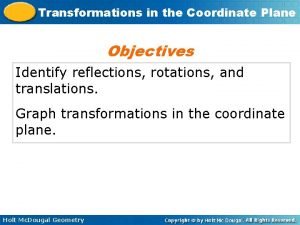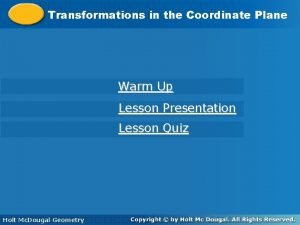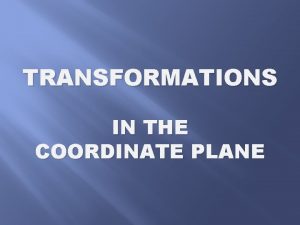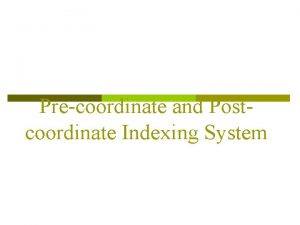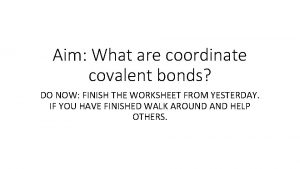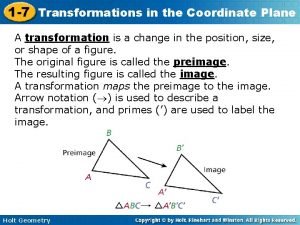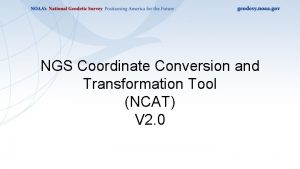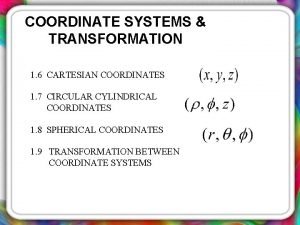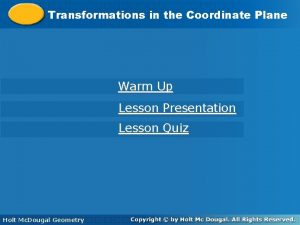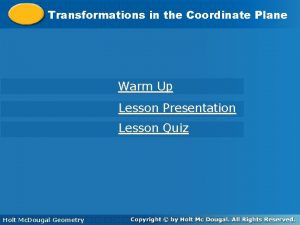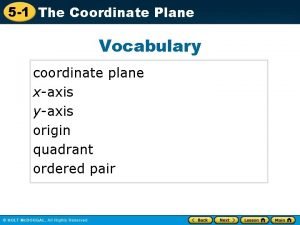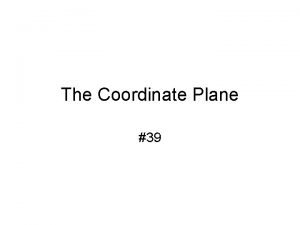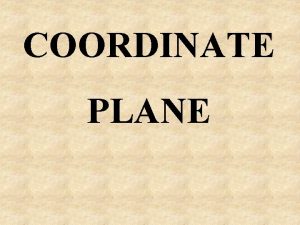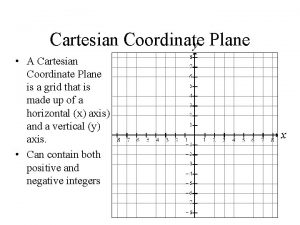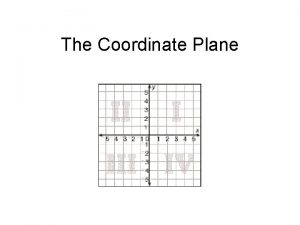TRANSFORMATIONS IN THE COORDINATE PLANE TRANSFORMATION A is









- Slides: 9

TRANSFORMATIONS IN THE COORDINATE PLANE

TRANSFORMATION A is when a figure or point is moved to a new position in a coordinate plane. This move may include a change in size as well as position. RIGID TRANSFORMATION A when the size and shape remain the same but the figure moves into a new position.

There are four types of movement (TRANSFORMATIONS): � TRANSLATION……(Slide) � ROTATION……. …. . (Turn) � REFLECTION……. . (Flip) � DILATION…(Enlarges or Reduces)

Today we will work with TRANSLATIONS Stop and do Translation Activity Once ACTIVITY is complete, we will come back to the powerpoint and add to our notes.

TRANSLATION is a movement of a figure that involves a slide in the x or y direction on a coordinate plane. More than one move may take place. Here is what a translation may look like. Notice that the direction the triangle is pointing did not change.

You have discovered that there are two methods to perform a “TRANSLATION”. Each will give you the new “prime points”.

METHOD 1: From each point, conduct the move requested one point at a time and then draw in your new image. Example: Plot points A(-2, 3), B(-6, 3), and C(-2, 7). Translate the figure 8 units right and 5 units down. STEP 1: Plot original points C B A STEP 2: From each original point move 8 units right and 5 units down. STEP 3: Connect the new points. This is your image and the points are the “prime” points. A(-2, 3) A’(6, -2) B(-6, 3) B’(2, -2) STEP 4: C(-2, 7) Now list the location of C’(6, 2) the new points as your “primes”.

METHOD 2: A right/left move will affect the x coordinate and an up/down move will affect the y coordinate. You can just do the arithmetic to each part of the ordered pair (coordinates). Example: Plot points A(-2, 3), B(-6, 3), and C(-2, 7). If the figure is translated 8 units right and 5 units down, name the prime points. The 8 units right will add 8 to the x number in the coordinate set and the 5 units down will subtract 5 from the y A(-2, 3) x y -2 + 8 = 6 and 3 – 5 = -2 A’(6, -2) B(-6, 3) -6 + 8 = 2 and 3 – 5 = -2 B’(2, -2) C(-2, 7) -2 + 8 = 6 and 7 – 5 = 2 C’(6, 2)

Quick Questions � Describe the difference between the pre-image and image. � Are the pre-image and image congruent? Similar? How do you know? � If you were only given the coordinates of a figure, how could you determine if it was the pre-image or image? � Which coordinate is changed when you translate a figure to the right or left? Up or down?
 Transformations in the coordinate plane
Transformations in the coordinate plane Identify the transformation from abc to a'b'c'
Identify the transformation from abc to a'b'c' Coordinate plane help
Coordinate plane help Transformation in the coordinate plane
Transformation in the coordinate plane Software-defined networking: a comprehensive survey
Software-defined networking: a comprehensive survey What is pre coordinate indexing system
What is pre coordinate indexing system C-o covalent bond
C-o covalent bond 1-7 transformations in the plane
1-7 transformations in the plane Ncat download
Ncat download Transformation from cartesian to spherical coordinates
Transformation from cartesian to spherical coordinates
